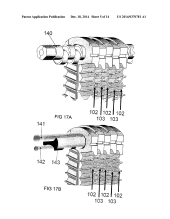


tel jetson wrote:
Robert Overturf wrote:With these frames, they can be harvested without removal and the channel for the honey to flow is at the back of the cell out of reach of the bees so there is zero risk of crushing bees while harvesting honey.
zero risk? I disagree. the only way to assure zero risk of adult bees being crushed would be to remove the frame to inspect it ahead of time. at that point, the major selling point is rendered moot. there is always a chance, though perhaps rather small, that a bee is inside a cell of the frame to be harvested. could be eating honey, could be cleaning, could be making bee bread, could be doing any number of things.
and the only way to assure zero risk of brood being destroyed would be to use a queen excluder, which creates a number of other problems and is not generally considered appropriate for bee-centric beekeeping.
you say the criticism is mostly due to ignorance of the contraption's mechanism and mode of operation. certainly some of the criticism is due to ignorance, but some is very well founded. I would counter that most, though maybe not all, of the enthusiasm for the Flow Hive is due to ignorance of honey bee biology and ecology and the realities of beekeeping.








